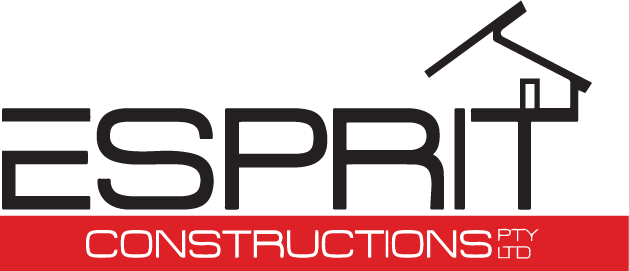Payment Progress Schedules Explained
Building a new home can be an overwhelming process. One thing clients are often unsure about is progress payments and payment schedules for a build. Payment schedules are usually outlined in the building contract
Here’s a general overview of how it all works:
There are six stages that are invoiced for a build. The stages include the initial deposit, the Base stage, Frame Stage, Enclosed (or Lock Up) Stage, Fixing Stage and Practical Completion.
Each of these stages are worth a set percentage of the total contract price, proportionate to its value of the total works. Esprit Constructions uses the HIA New home construction contract (QB1). As part of this contract, each stage requires a payment which is invoiced once that part of the works have been completed. Your builder will send you invoices for each stage which you will then need to send to your broker or bank so that they can release funds to pay your builder.
An overview of the stages:
Initial part deposit- Once the client is satisfied with the Quote for the new home, the quote is signed and a partial deposit is paid. We will then draft up the contract for signing.
Deposit – The remainder of deposit is invoiced once finance has been approved and all building approvals have been attained by the builder. This deposit invoice is for the deposit amount specified in the contract less the initial partial deposit amount. Depending on your loan requirements your lender will pay this from the loaned amount.
Base stage – this stage is invoiced once the concrete slab has been poured and the base of the build is completed.
Frame Stage – this stage in invoiced once the framework for the build has been completed. This means that wall frames, roof frames and all tie downs and bracing has been completed.
Enclosed stage – this is also known as ‘Lock Up Stage’. This stage is invoiced once the roof has been installed, any external doors have been installed and the windows have been fixed.
Fixing Stage – this stage is invoiced once all internal fit-offs have been completed. This includes the internal lining, architraves, cornices, skirting, doors to rooms, shower trays, wet areas tiling, built-in cabinets & cupboards.
Practical completion – This in invoiced once the build reaches its final stage. This is invoiced when the build has reached the final stage and the Prehandover process has been completed.
The final payment made is the cost of any signed variations agreed upon during the building process. These are expenses usually paid by the owners of the build, not the bank, as they are generally not included in the loan.
This process can vary slightly depending on the builder and the contract type that they offer but each individual builder will be able to explain any variations to you and talk you through the finance process before entering into the contract with you.
This part of the building process can sometimes be a little confusing and understanding how and when you need make payments is an important thing to investigate and know about before signing your contract.







